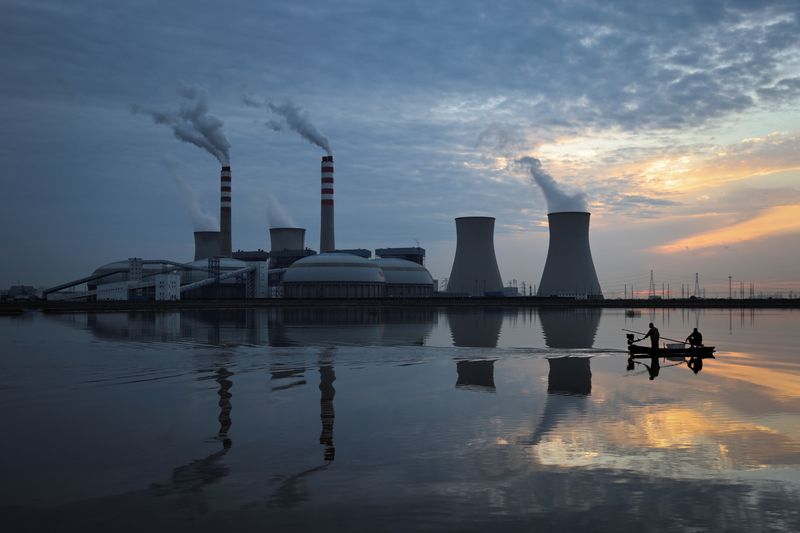BEIJING (Reuters) – China’s energy crisis deepened on Friday as cold weather swept into much of the country and power plants scrambled to stock up on coal, sending prices of the fuel to record highs.
Electricity demand to heat homes and offices is expected to soar this week as strong cold winds move down from northern China. Forecasters predict average temperatures in some central and eastern regions could fall by as much as 16 degrees Celsius in the next 2-3 days.
Shortages of coal, high fuel prices and booming post-pandemic industrial demand have sparked widespread power shortages in the world’s second-largest economy. Rationing has already been in place in at least 17 of mainland China’s more than 30 regions since September, forcing some factories to suspend production and disrupting supply chains.
The most-active January Zhengzhou thermal coal futures hit a record high of 1,669.40 yuan ($259.42) per tonne early on Friday. The contract has risen more than 200% year to date.
The three northeastern provinces of Jilin, Heilongjiang and Liaoning – among the worst hit by the power shortages last month – and several regions in northern China including Inner Mongolia and Gansu have started winter heating, which is mainly fuelled by coal, to cope with the colder-than-normal weather.
Beijing has taken a slew of measures to contain coal price rises including raising domestic coal output and cutting power to power-hungry industries and some factories during periods of peak demand. It has repeatedly assured users that energy supplies will be secured for the winter heating season. [B9N2QE019]
But power shortages are expected to continue into early next year, with analysts and traders forecasting a 12% drop in industrial power consumption in the fourth quarter as coal supplies fall short and local governments give priority to residential users.
Graphic: China power rationing map – https://graphics.reuters.com/CHINA-POWER/jnvweyzazvw/chart.png
Earlier this week, China in its boldest step in a decades-long power sector reform said it would allow coal-fired power prices to fluctuate by up to 20% from base levels from Oct. 15, enabling power plants to pass on more of the high costs of generation to commercial and industrial end-users.
Steel, aluminium, cement and chemical producers are expected to face higher and more volatile power costs under the new policy, pressuring profit margins. Data on Thursday showed factory-gate inflation in September hit a record high.
Graphic: Temperatures in northern China dip below normal, boosting heating demand amid power pinch – https://fingfx.thomsonreuters.com/gfx/ce/lbpgnobnyvq/BeijingTempsOct132021.png
China aims to be “carbon neutral” by 2060 and Beijing has been trying to reduce its reliance on polluting coal power in favour of cleaner wind, solar and hydro. But coal is expected to provide the bulk of its electricity needs for some time.
China is not the only nation struggling with power supplies, which has led to fuel shortages and blackouts in some countries. The crisis has highlighted the difficulty in cutting the global economy’s dependency on fossil fuels as world leaders seek to revive efforts to tackle climate change at talks next month in Glasgow.
China will strive to achieve carbon peaks by 2030, Vice Premier Han Zheng said in a video message at the Russian Energy Week International Forum, according to state-run news agency Xinhua late on Thursday.
He also said that China and Russia are important forces leading the energy transition and they should cooperate and ensure smooth progress of major oil and gas pipeline and nuclear power projects.
($1 = 6.4351 Chinese yuan renminbi)
(Reporting Shivani Singh in Beijing; additional reporting by Aizhu Chen, Muyu Xu and Beijing newsroom; Editing by Kim Coghill)
























